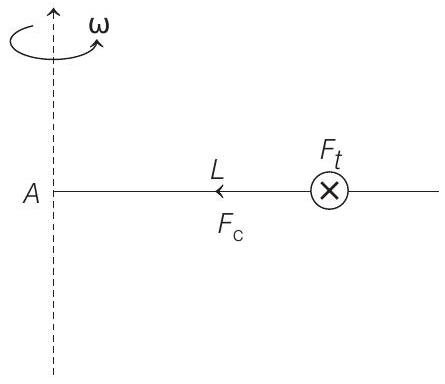Laws of Motion 4 Question 5
5. A long horizontal rod has a bead which can slide along its length and is initially placed at a distance
(a)
(b)
(c)
(d) infinitesimal
Show Answer
Answer:
Correct Answer: 5. (a)
Solution:
- Tangential force

Therefore,
Angular velocity at time
Equating Eqs. (i) and (ii), we get
For
In the figure,






